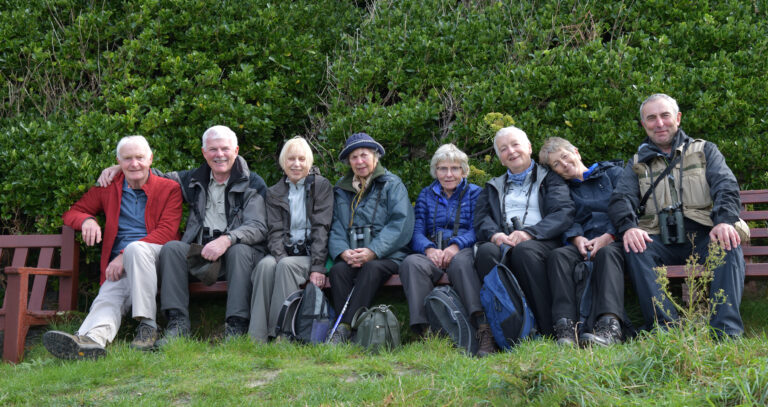
We have an exclusive flight to ourselves on the Sky Bus from Exeter, cruising at 10000 feet along the length of the ever-narrowing southwest peninsula, until the land runs out at Lands’ End, where we begin our descent into Saint Marys. Once landed, we have a very short transfer to the excellent Wheelhouse guesthouse overlooking Porthcressa Beach and end the day with a nice pizza in the Pilot’s Gig.
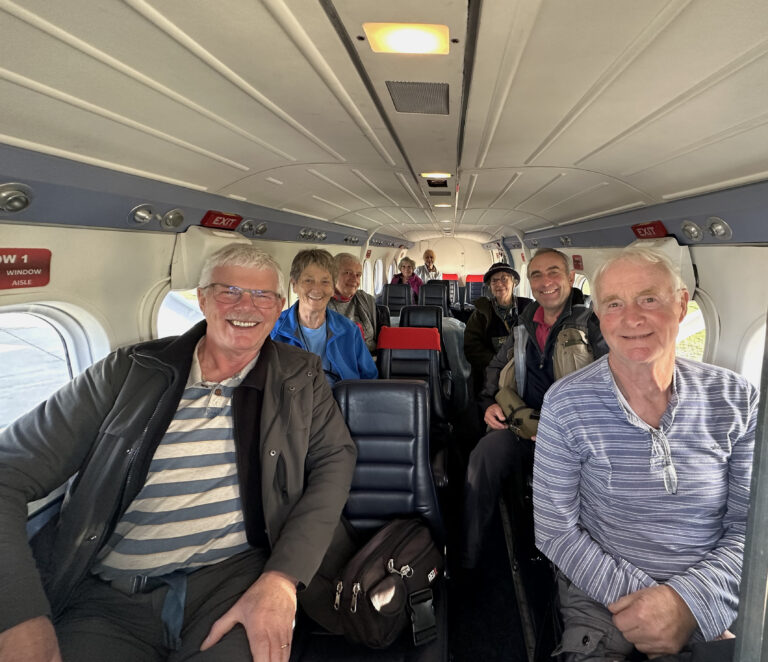
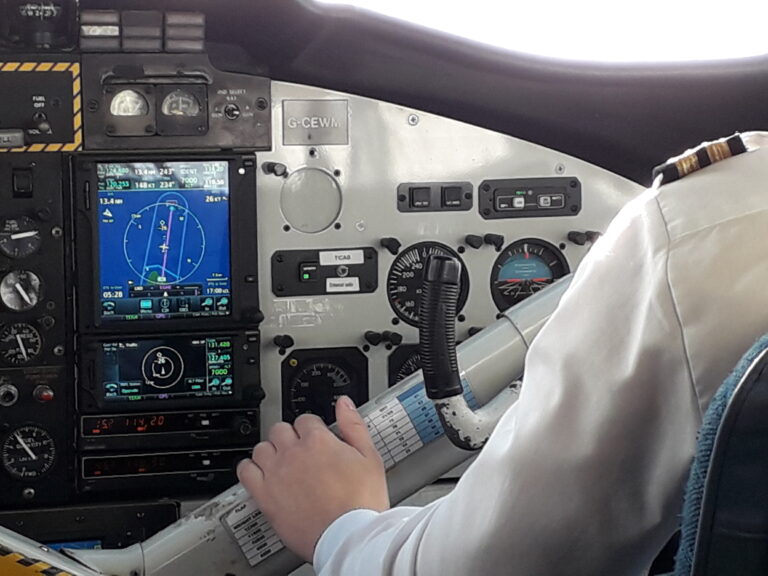
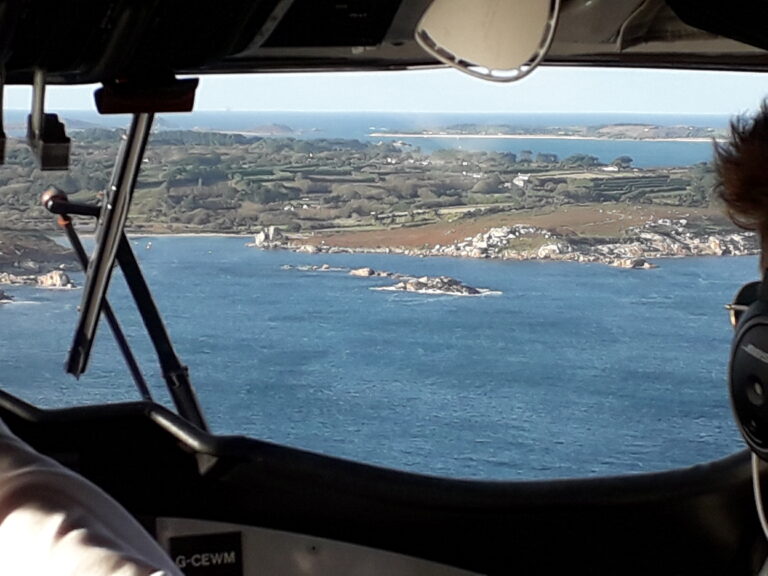
We set off on a ‘grand tour’ of Saint Marys this morning, with a very calm sea outside our guesthouse, where Porthcressa Beach produces Rock Pipit and then a Black Redstart. Heading south to Peninnis Head, plenty of Gannets are diving in offshore and then we find the first of several Stonechats on our way to Old Town Bay where we call in at the cemetery to see the grave of former Prime Minister James Harold Wilson, as well as the grave of Horatio Nelson, but not the famous Lord Nelson!
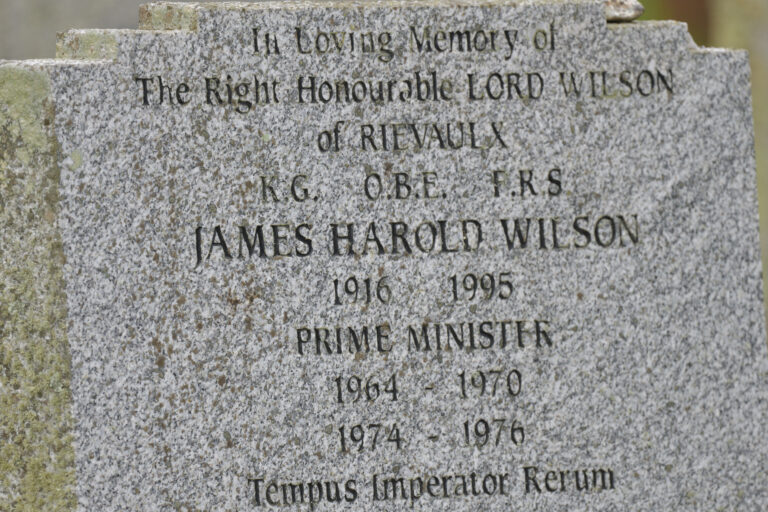
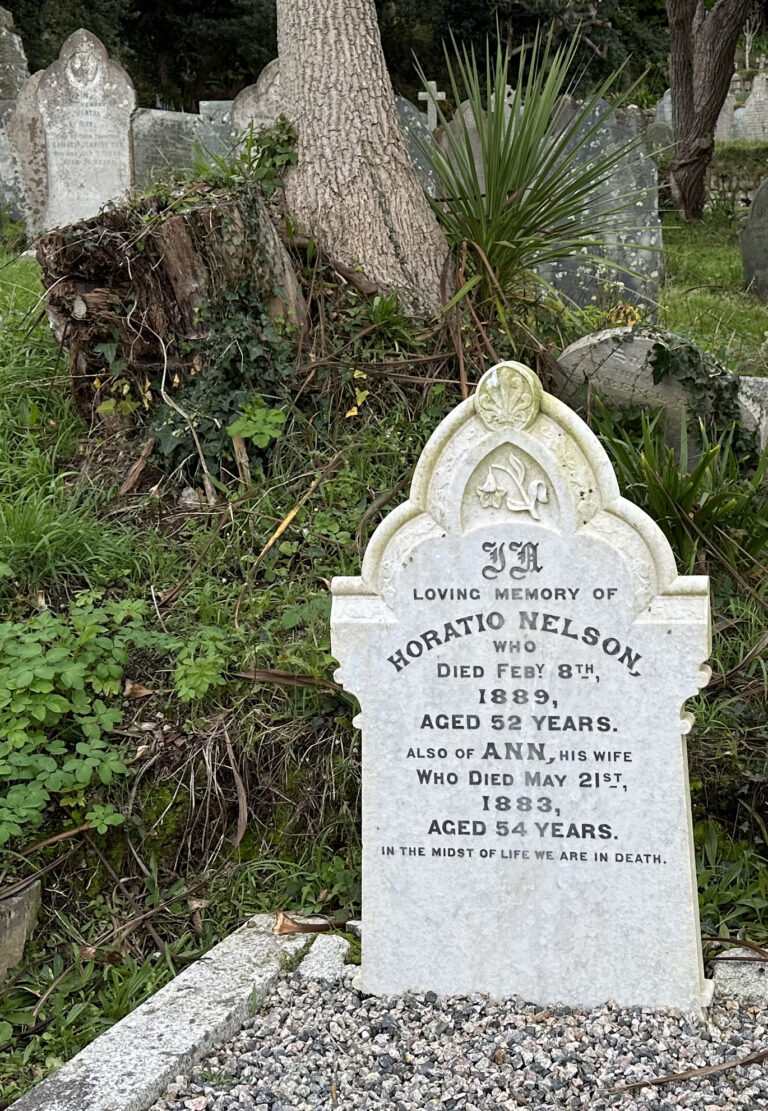
A scan of the bay on a receding tide produces an obliging Greenshank as well as a Heron and a Little Egret. After a quick tea break on the sea front in Old Town, we head north on the trail of a Red-breasted Flycatcher, reported at nearby Harry’s Walls at 11.26am. On the way to the Tudor fortifications, we enjoy brilliant views of a Jack Snipe, feeding out in the open just five yards in front of the hide, while bobbing incessantly as if spring-loaded! Further along the path through the dense bushes of Lower Moors we get a brief view of a Siberian Chiffchaff, but by 11.41am the Red-breasted fly is reported as “Lost in dense undergrowth”. Around 12.30pm, the benches looking out to Porthmellon Beach are a popular choice for lunch, after which a check at Harry’s Walls still shows no signs of the flycatcher, so we revert to the original plan to visit the airfield, as it is undisturbed by flights on Sundays. Back at Old Town Bay, we find three Turnstones and a Redshank on the way to Porth Minnick, the bay below the airfield, where more Stonechats are joined by a smart looking Wheatear. Below the brow leading up to the airfield, I brief the group about a possible recently reported Wryneck and lo and behold, there it is out in the open on a low rock just ten yards or so ahead of us, giving amazing views to all in the group, even trumping the Jack Snipe! Moving on to the airstrip, we find a flock of 32 Golden Plovers, followed by another Black Redstart at the Giant’s Castle, although there is no sign of the Snow Bunting reported here earlier today. From Porth Hellick, the pond at Higher Moors, produces two more Greenshanks and a pair of Gadwall. Back at ‘our’ beach, with about eight miles now on the ‘clock’, there is no sign of the recently seen Rose-coloured Starling, though we do find a couple more Rock Pipits.
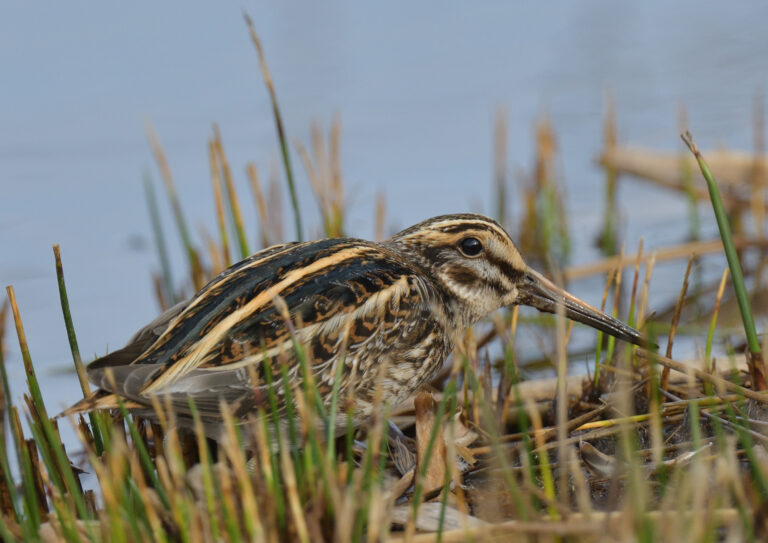
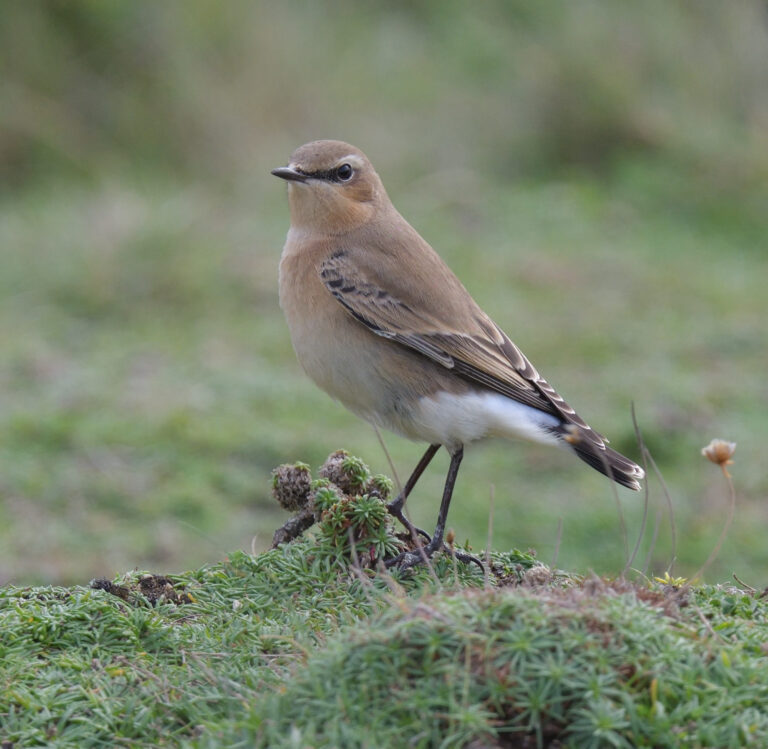
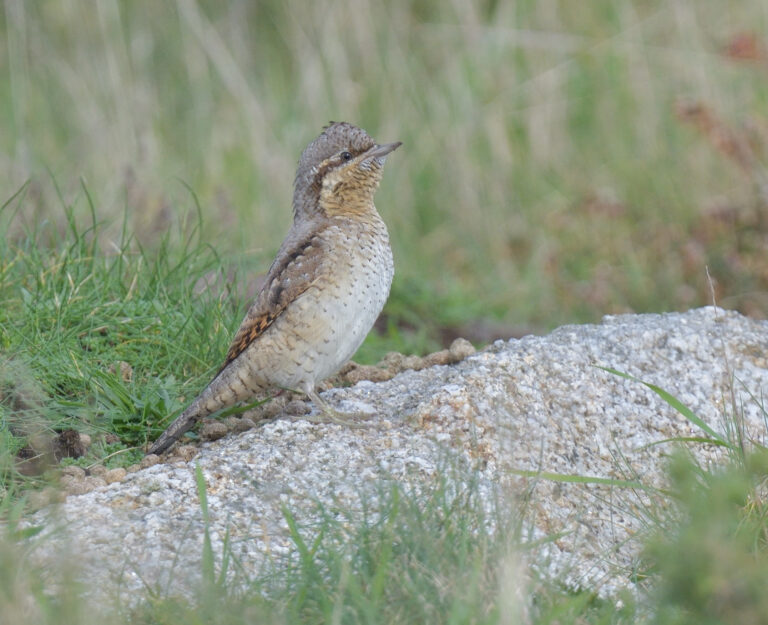
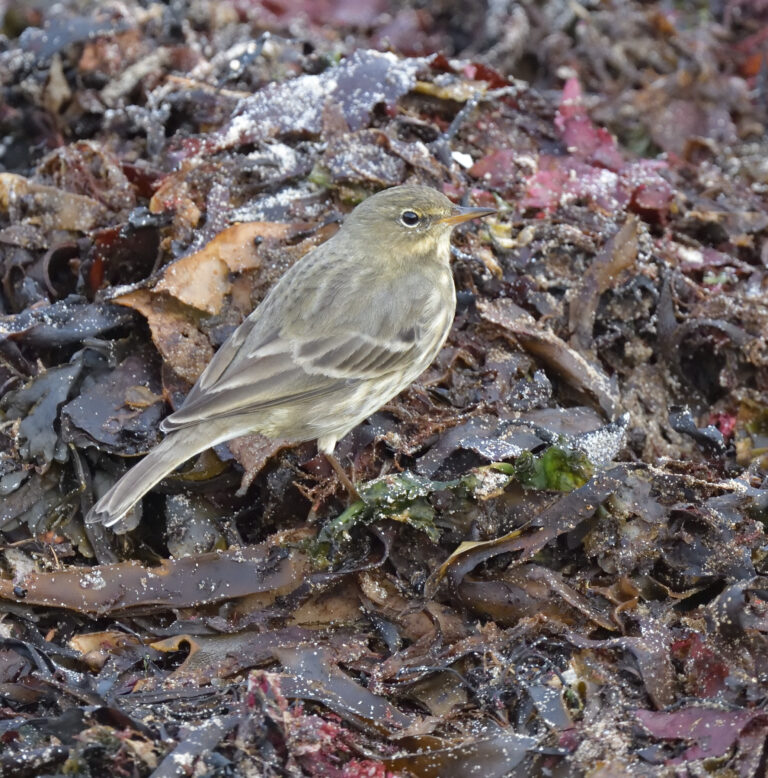
The Rock Pipits are on show again outside the guesthouse over breakfast this morning, while the sea is a lot more choppy due to much stronger winds. With no obvious rarities to aim for, we decide on Tresco for today’s outing aboard the Seahorse. On arrival, our first sighting is a couple of Spoonbills on a distant shore, followed by a smart drake Pintail on Abbey Pool and three Red-legged Partridges racing across the grass airstrip. More new birds include Kestrel and then a Cattle Egret, pecking flies off a small herd of cows. Meanwhile, news from Saint Marys includes Glossy Ibis, Red-backed Shrike, Little Bunting and Radde’s Warbler, aaaargh! Next, we find a Goldcrest which shows really well, four feet away at eye level, and then a Black-tailed Godwit on the edge of the Great Pool. Heading north along the coast from New Grimsby towards Cromwell’s Castle, we find a pair of Black Redstarts being hassled by a Robin and then I shout “look up” as a Short-eared Owl flies low across the slope just above us. Convinced that it had landed below the skyline, I scan the slope and pinpoint the owl in the scope as it hunkers down out of the wind. Back in New Grimsby, we find a sizeable flock of Linnets perched on top of a hedge, making a tally of 50 different birds today, despite the adverse conditions, and end with an exhilarating spray-soaked ride back to port on Saint Marys.
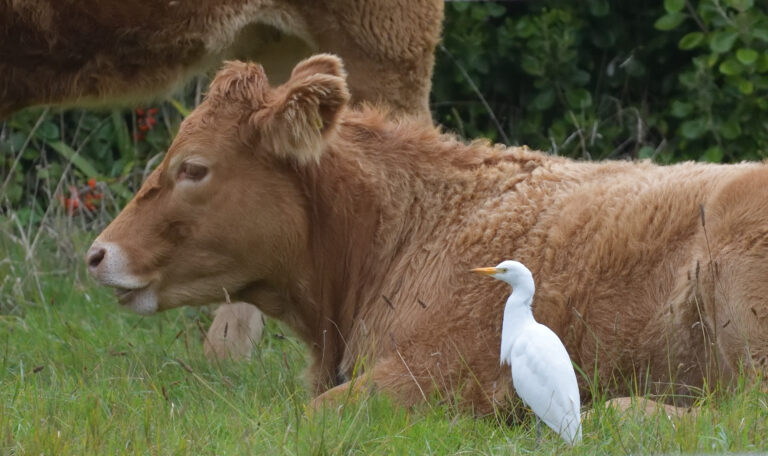
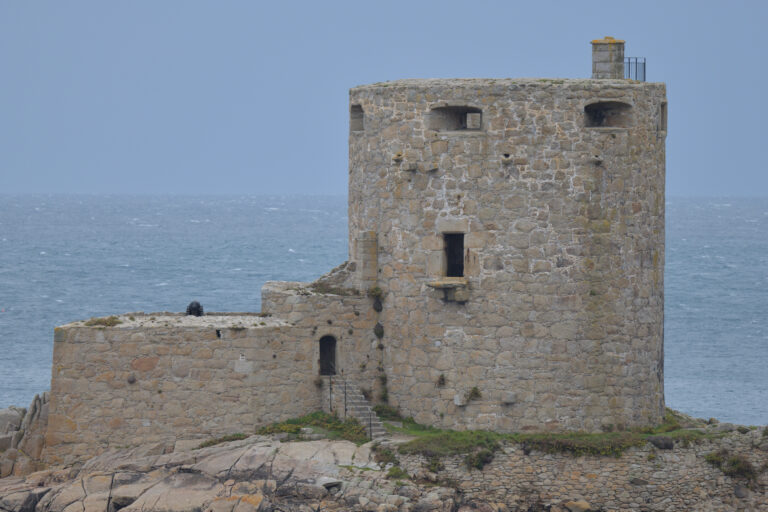
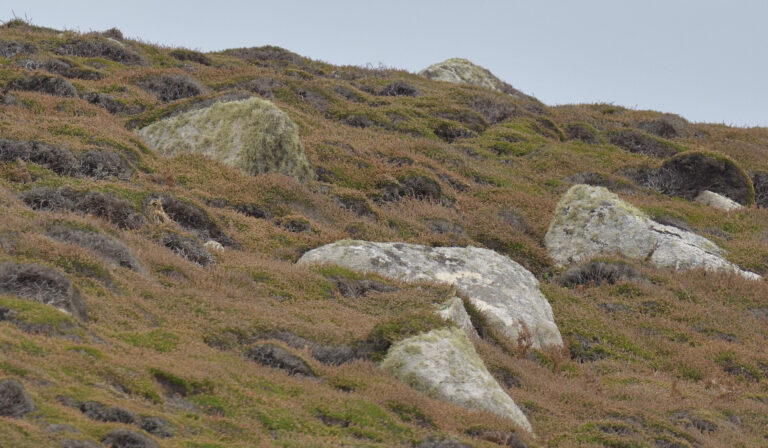
The sound of rain lashing against the windows is not a great start this morning, so we delay our departure until the rain stops at around 10.30am and soon find a lone Sandwich Tern on the rocks off Porthcress Beach. Switching to the more sheltered west coast we find three Red-breasted Mergansers fishing off Porthmellon Beach and then lots of Ringed Plovers with Turnstones and Oystercatchers on Porthloo Beach. At the north end of the island, near the twenty first century radio mast, we visit Bant’s Carn, a bronze age burial chamber (circa 2500BC) next to an iron age village dating back to around 300BC, where a few flighty Siskins whizz by on the stiff breeze. From here, we head east and spot a Snipe hunkered down in a field on the way to Newford duck pond, where a Pied Flycatcher briefly shows well, while there is no sign of yesterday’s Red-backed Shrike here, although the blustery conditions with rain again are not helping. Annoyingly, half an hour later, the blessed shrike is back, but by now we are soldiering on to Normandy, hoping to find Little Bunting and Ring Ouzel in the same area. By the time we arrive, the Ring Ouzel has gone and there is no sign of the Little Bunting, but I have never seen so many Stonechats in one spot, with surely at least a dozen busily feeding on caterpillars in the fodder crop, along with Meadow Pipits and both male and female Blackcaps. Moving on we spot several Redwings in a furrowed field on the way to Old Town Bay where the high sea is crashing onto the rocks. Last stop is on the breezy Peninnis Head, hoping to find the Lapland Bunting but again there is no sign. Meanwhile, a Ring Ouzel has gone to join the shrike at Newford duck pond, ending a challenging and frustrating day, although we still managed to see 41 different birds today, including 11 new ones.
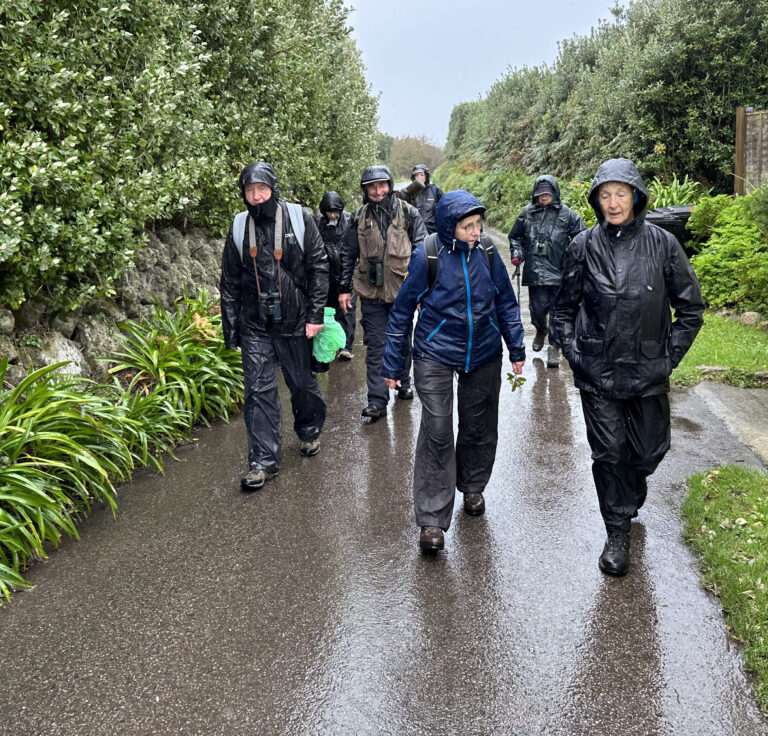
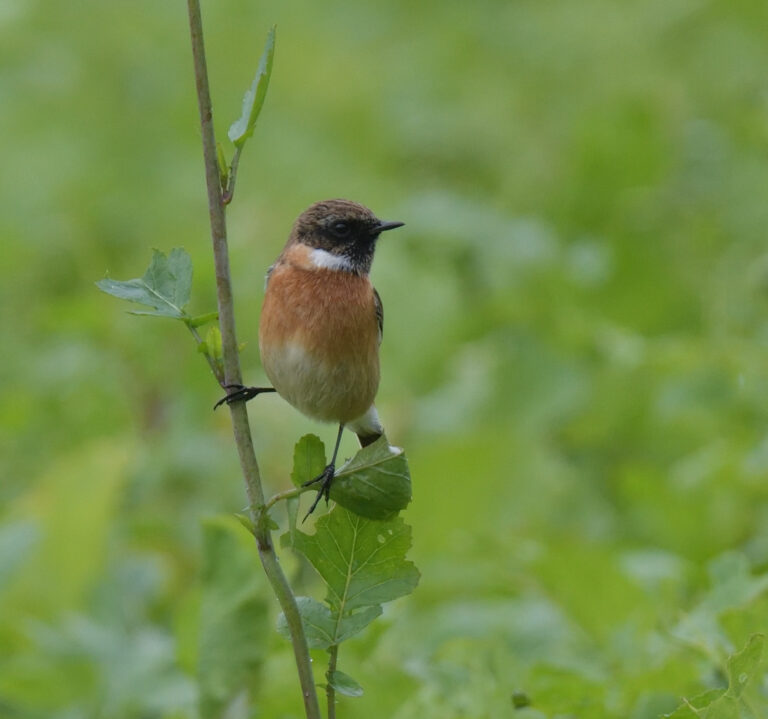
With the arrival of Storm Babet and plenty more rain, the flotilla of ‘farmyard’ Mallards seem happy enough, bobbing on the waves off ‘our’ beach. Although it’s lovely weather for ducks it seems pointless to go out and get soaked in such rough conditions which continue to batter and lash the island until mid-afternoon, when we eventually set out to explore the nearby Garrison. After narrowly missing a Yellow-browed Warbler here, “a minute ago”, we decide to make a last ditch throw of the dice and head back to Peninnis for “Little and Lapland Buntings, showing well”. This sounds too good to be true, and knowing our luck, they will be gone by the time we arrive, but we press on anyway and find our own three Mediterranean Gulls flying back and forth along the strand line on Porthcressa Beach on the way. Arriving at the said site on Peninnis, with perfect timing, both buntings are amazingly still there and showing really well at close range! In fact, while feeding together, we watch them in the same scope view, giving us a good comparison of the size and plumage differences between them. Incredible, two rare buntings for the price of one! You just couldn’t make it up. Wow, what a result. Back at ‘our’ beach, we finish the day with a super male Black Redstart, on the rocks right outside the guesthouse!
According to Jen from the guesthouse, yesterday was “the worst day of the season”, but what a difference a day makes as we have blue sky and no wind this morning for a smooth crossing on the Guiding Star to Saint Agnes, where we find a pair of Black Redstarts showing really well on the rocks next to the quay. Following the coast around Porth Killier, Skylark and a single Bar-tailed Godwit are both new for the trip, while the Rose-coloured Starling reappears on ‘our’ beach back on Saint Marys, after an absence of three days! This bird is clearly playing games. Meanwhile, near Lower Town church, we find Common and Curlew Sandpipers, a couple of Sanderlings and a handful of Dunlin among plenty of Turnstones and at least seventy Ringed Plovers on Periglis Beach. After ice creams from Troy Town, serenaded as always by countless Robins wherever we go on this lovely island, we move on to the stunning Wingletang Down, looking like Dartmoor-on-Sea with its spectacular granite tors, where we spot a hovering Kestrel as well as Linnets and Stonechats, with Gannets diving into the deep blue sea. After a complete circuit of Saint Agnes, we arrive back at the quay in time for a swift half in The Turk’s Head before boarding the 4.30pm boat back to Saint Marys, with a trip tally of 78 species, including highlights like Cattle Egret, Spoonbill, Jack Snipe, Mediterranean Gull, Short-eared Owl, Wryneck, Black Redstart, Pied Flycatcher, Siberian Chiffchaff, and of course, the Lapland and Little Buntings.
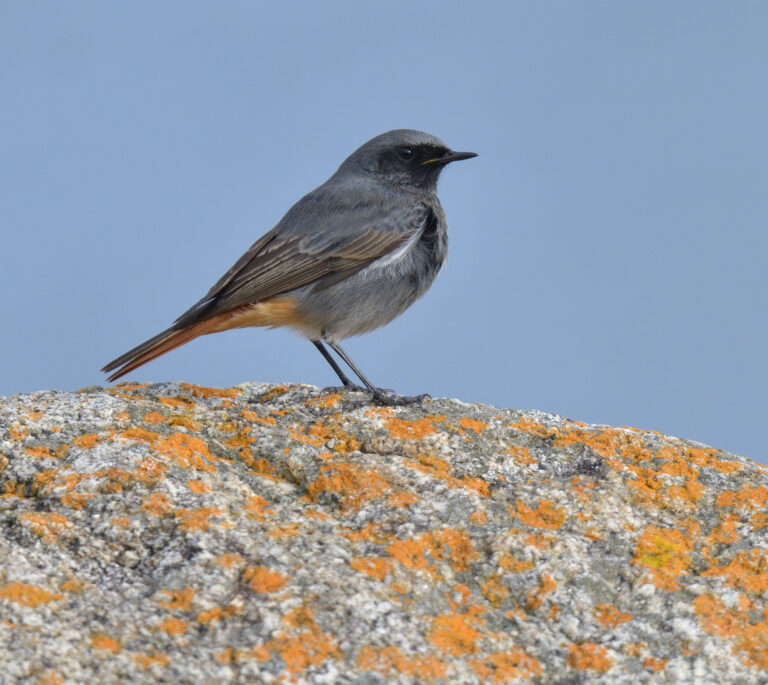
Just when they think it’s all over, all Skybus flights are cancelled due to poor visibility, so we take the Scillonian back to Penzance, with a chance to watch loads of Gannets and other seabirds like Kittiwakes and Cory’s, Great and Sooty Shearwaters on the crossing.
